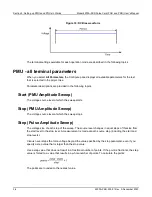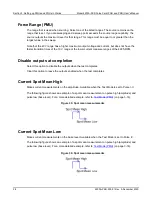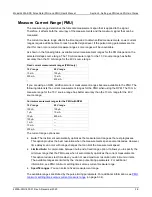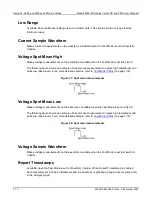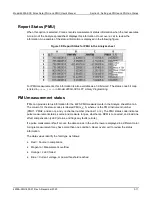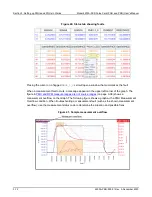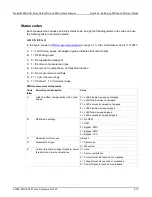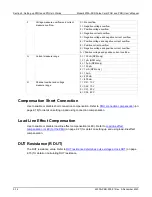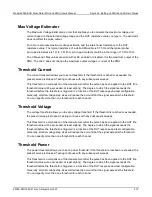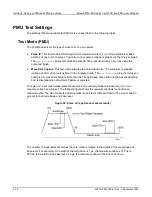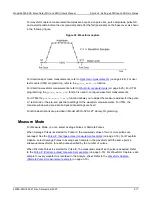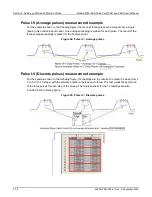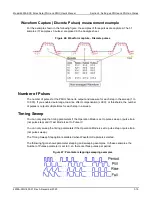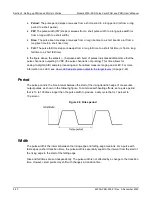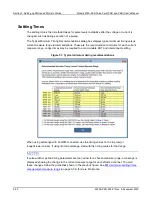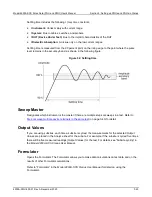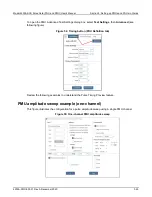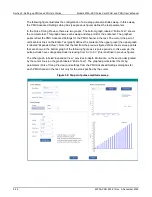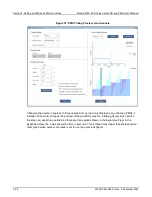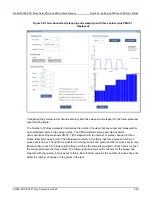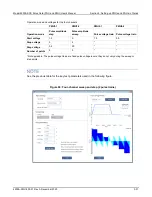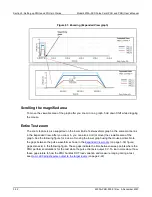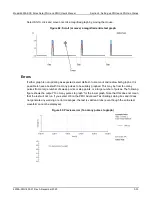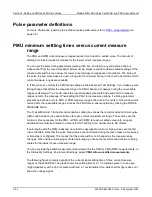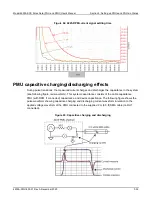
Section 3: Setting up PMUs and PGUs in Clarius
Model 4200A-SCS Pulse Card (PGU and PMU) User's Manual
3-20
4200A-PMU-900-01 Rev. A December 2020
•
Period:
The pulse period steps or sweeps from a short period to a long period (or from a long
period to a short period).
•
PW:
The pulse width (PW) steps or sweeps from a short pulse width to a long pulse width (or
from a long width to a short width).
•
Rise:
The pulse rise time steps or sweeps from a long rise time to a short rise time (or from a
long rise time to a short rise time).
•
Fall:
The pulse fall time steps or sweeps from a long fall time to a short fall time (or from a long
fall time to a short fall time).
In the figure above, the ellipsis (...) between each burst of pulses indicates additional time that the
pulse channel is outputting 0 VDC (the pulse channel is not pulsing). This time allows for
analog-to-digital (A/D) sample processing and, if enabled, measure ranging and LLEC. For more
How LLEC adjusts pulse output to the target levels
(on page 2-22).
Period
The pulse period is the time interval between the start of the rising transition edge of consecutive
output pulses, as shown in the following figure. To minimize self-heating effects, set a pulse period
that is 10 to 100 times longer than the pulse width to produce a duty cycle that is 1 percent to
10 percent.
Figure 48: Pulse period
Width
The pulse width is the interval between the rising-edge and falling-edge medians. For a pulse with
fast edges (a short transition time), the pulse width is essentially equal to the interval from the start of
the rising edge to the start of the falling edge.
Rise and fall times are set independently. The pulse width is not affected by a change to the transition
time. However, start points may shift with changes in transition time.

